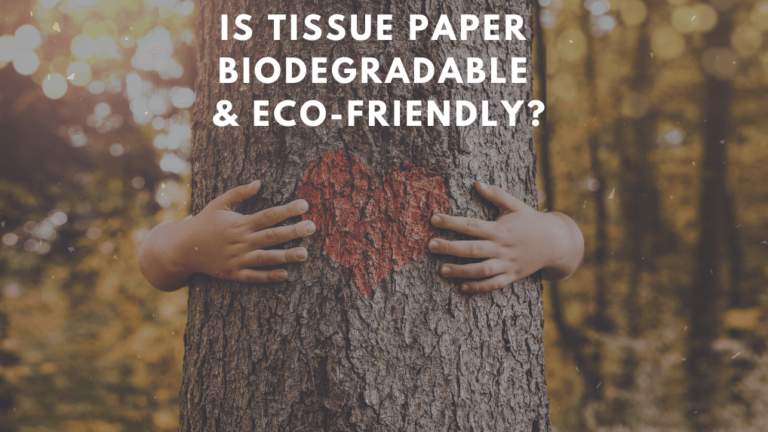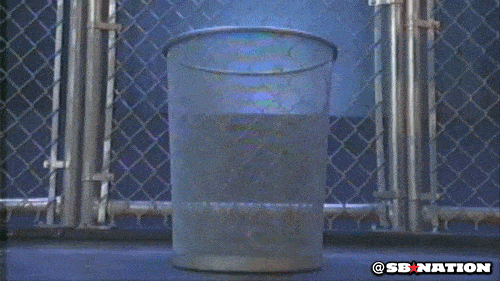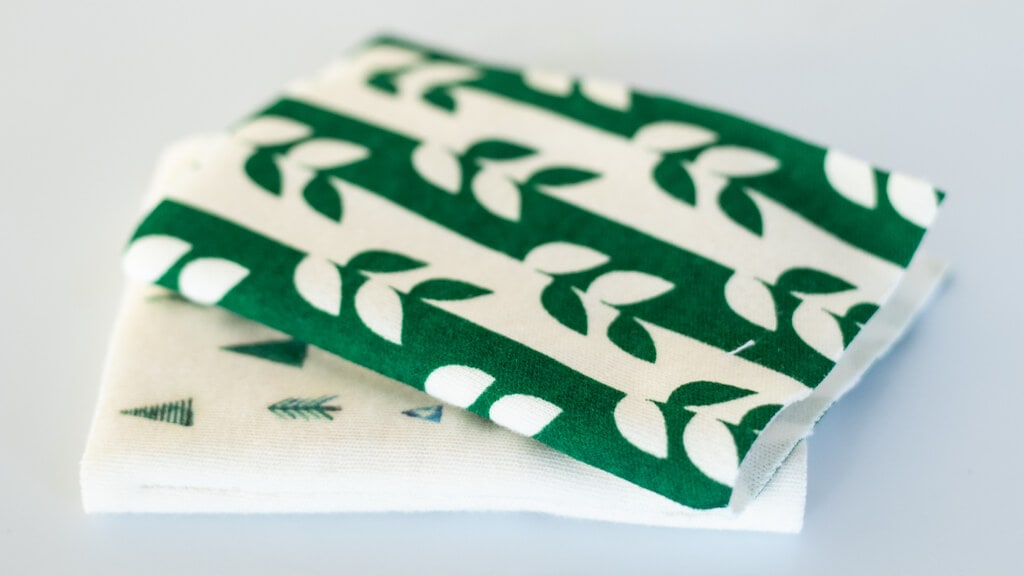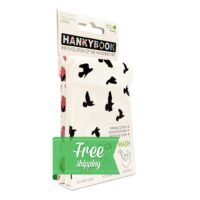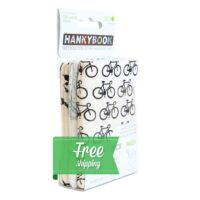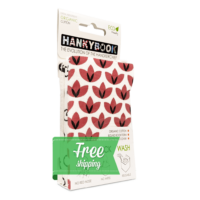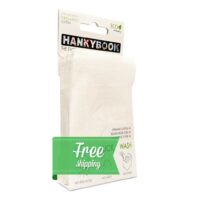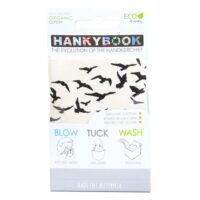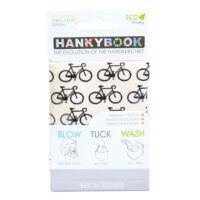How many facial tissues have you used this year?
The answer will vary depending on whether you have allergies, the season of the year, or other factors. But the answer is probably “A LOT” and the box of disposable facial tissues in your home right now is evidence of it.
It wasn’t always like this. Facial tissues became all the rage as an alternative to handkerchiefs in the early 20th century when the novelty and convenience of a disposable handkerchief had no consideration for the environment. Since then the disposable facial tissue industry has boomed to the moon.
There’s nothing wrong with big companies who produce tissue paper making profits from their products. They have fulfilled a need and that’s why a company like Kleenex has been successful since the year it introduced its disposable facial tissues nearly 100 years ago in 1924.
But as we enter a time of more responsible and eco-friendly practices, we have to ask the important questions in the age of sustainability:
Is tissue paper eco-friendly?
Is tissue paper biodegradable?
Is the process of manufacturing tissue paper sustainable?
Are there alternatives to tissue paper?
Let’s find out.
How facial tissues are made
The majority of facial tissue paper is made from virgin wood pulp. The trees are logged, cut into chips, and then ground into flakes.
These flakes are mixed into pulp by combining them with a large amount of water. Chemical additives such as bleach are then used to soften, strengthen, and color the paper. This pulp is then poured onto massive steam-heated drums to dry the paper, before the tissue is placed on a heated roller to dry the fabric.
This fabric is cut to shape, portioned, packaged in wrapping machines, and finally, packed for distribution.
From seed to store, the manufacturing process of tissue paper is an energy-intensive, water-wasting, and chemically infused operation.
In short: entire plantations are grown for the purpose of being cut down so that we can blow our noses and then throw the tissue in the trash.
Is tissue paper biodegradable?
The short answer to a complicated question is yes, most tissues are biodegradable and compostable. The raw component of facial tissues is wood fibers or recycled material, natural raw materials that will eventually decompose.
However, the additives used to reinforce the paper mean that it can take anywhere from weeks to many months to fully decompose. Environmental factors like exposure to light, air, and humidity also play a key role.
It’s worth noting that most tissue paper is wrapped in plastic. This plastic will take a much longer time to decompose when disposed of. The plastic wrap of the tissue box can resist breaking down into its chemical components for many decades, clogging up landfills and littering landscapes long after the paper products themselves have biodegraded.
Can tissue paper make my allergies worse?
Facial tissues can worsen acne if you have sensitive skin. This is particularly bad if your tissues are scented. Of course, when you have a runny nose, the constant abrasion of tissue paper on the delicate skin of your mouth and nose area can cause swelling, redness, and irritation.
Is tissue paper toxic?
Next time you’re in the store, or if you have a box of Kleenex handy, take a look at the ingredients. Go on.
You’ll find that it contains ingredients such as Parafinum (a petroleum product), isopropyl palmitate (a notorious pore clogger), and dioxins that are released into the environment as facial tissues decompose. Some brands continue to manufacture tissues containing formaldehyde, classified as a “probable human carcinogen” by the EPA.
Is tissue paper recyclable?
Unfortunately, most tissue paper is not recyclable. Once they come into contact with body fluids, grease and food waste they cannot be easily “cleaned” in the recycling process. This is the same story for napkins, toilet paper, paper towels, paper plates, etc.
What is the safest way to dispose of tissue paper?
Facial tissues should not be flushed away. They do not degrade safely in septic systems and can cause clogging and blockages.
If you want to get rid of your tissue paper without throwing it in the trash, a home compost in your garden is your best bet.
Or…
The facial tissue alternative
There is no “Planet B”, so we have to make a Plan B for our wasteful habits. Using something once and throwing it away is not sustainable. Making better buying decisions in the store definitely helps, for example choosing facial tissues that are tree-free – although this type of tissue paper can be really rough on the nose. They certainly don’t work for my sensitive nose.
In my view, the ultimate facial tissue paper alternative is the cotton handkerchief. That’s right, we’re going full circle – a throwback to the OG.
Handkerchiefs can be used, washed, and reused hundreds of times. In fact, the longer you have them the softer they get. Just toss them in with your wash and they are good to go – again and again.
They are a timeless way to take care of sniffles, coughs, colds, runny noses and any spills in a way that doesn’t harm the planet. Handkerchiefs are easily the more sustainable option than facial tissues.
OK, but isn’t walking around with a pocket of snot all day unsanitary?
There’s using a handkerchief, and then there’s using a handkerchief properly – I created a video hanky folding guide and there are plenty others online.
The basic principle is to fold the handkerchief in such a way that you have a new, fresh compartment to blow your nose into with every use. Proper folding of the handkerchief prevents the “ick” factor that you’re thinking of.
In fact, it was this folding method that inspired me to create HankyBook – a little book where each soft cotton page is a fresh sleeve to blow your nose or take care of any number of little spills that life can throw at you. It’s bound between a protective cover, so it easily slips into your pocket or bag.
Hankybook is much more sustainable and environmentally friendly than facial tissues. It’s a practical and eco-friendly alternative to facial tissues.
Final thoughts
If you’re of an eco-friendly mindset, it makes sense to either compost your used tissues or start switching to reusable handkerchiefs. We live in a world full of waste – particularly when it comes to plastic and paper products.
Every small step helps to change habits and reduce the impact on our planet. Are you ready to take that step?
-
 Natural HankyBook$7.95
Natural HankyBook$7.95 -
 Bird, Pink Lotus, Natural 3-Set$25.95
Bird, Pink Lotus, Natural 3-Set$25.95 -
 Birds, Bikes, Natural 3-Set$25.95
Birds, Bikes, Natural 3-Set$25.95 -
 Pink Lotus, Bird, Bike 3-Set$25.95
Pink Lotus, Bird, Bike 3-Set$25.95 -
 Natural 3-Set$25.95
Natural 3-Set$25.95 -
 Green and Brown Vine 2-Set$16.95
Green and Brown Vine 2-Set$16.95 -
 Birds HankyBook$8.95
Birds HankyBook$8.95 -
 Bike HankyBook$8.95
Bike HankyBook$8.95 -
 Green Vine HankyBook$8.95
Green Vine HankyBook$8.95
